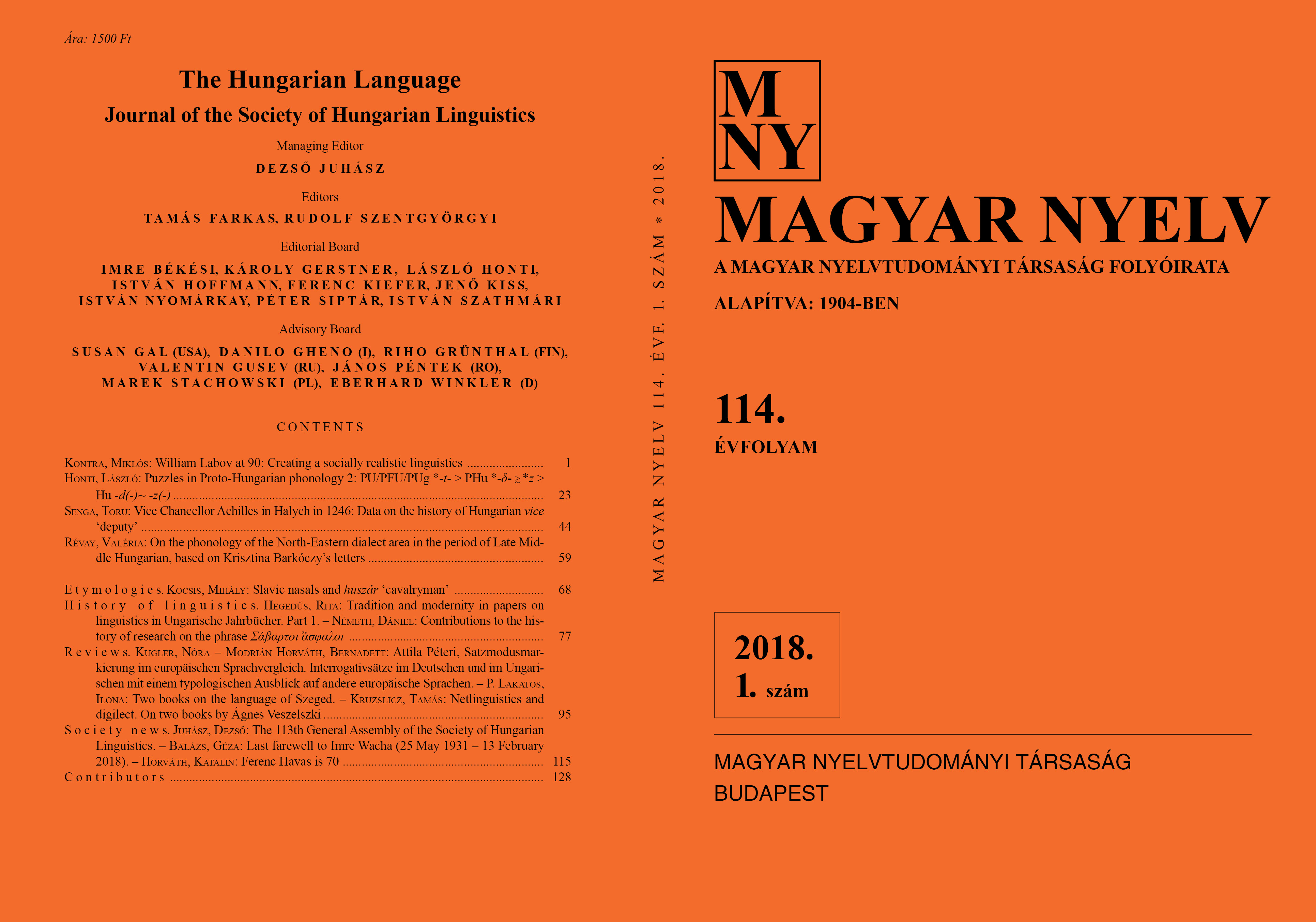Contributions to the history of research on the phrase Σάβαρτοι ̓άσφαλοι
DOI:
https://doi.org/10.18349/MagyarNyelv.2018.1.87Keywords:
szovárd, etymology, history of science, rediscovery, Ancient HungarianAbstract
This paper aims to show that Loránd Benkő’s new (2009) etymological approach to the Ancient Hungarian patronym szovárd is basically the same as Sándor Csizmadia Somogyi’s from 1826. However, there is a great discrepancy between the two methods, so I have emphasised the elements from Benkő’s argumentation which can be useful for the future and those that have already been reflected on as weak points. Furthermore, I give two other cases when nineteenth-century scholarly articles were forgotten but their main points were discovered as new results by others as their own in the past few decades. Finally, the most recent works already see the problem of the patronym szovárd from a new point of view that can be fruitful.
Downloads
Published
Issue
Section
License
Copyright (c) 2024 Dániel Németh

This work is licensed under a Creative Commons Attribution-NonCommercial-NoDerivatives 4.0 International License.
Magyar Nyelv is a Diamond Open Access periodical. Documents can be freely downloaded and duplicated in an electronic format, and can be used unchanged and with due reference to the original source. Such use must not serve commercial purposes. In the case of any form of dissemination and use, Hungarian Copyright Act LXXVI/1999 and related laws are to be observed. The electronic version of the journal is subject to the regulations of CC BY-NC-ND (Creative Commons – Attribution-NonCommercial-NoDerivatives).
The journal permits its authors, at no cost and without any temporal limitation, to make pre-print copies of their manuscripts publicly available via email or in their own homepage or that of their institution, or in either closed or free-for-all repositories of their institutions/universities, or other non-profit websites, in the form accepted by the journal editor for publication and even containing amendments on the basis of reviewers’ comments. When the authors publicize their papers in this manner, they have to warn their readers that the manuscript at hand is not the final published version of the work. Once the paper has been published in a printed or online form, the authors are allowed (and advised) to use that (post-print) version for the above purposes. In that case, they have to indicate the exact location and other data of the journal publication. The authors retain the copyright of their papers; however, in the case of an occasional secondary publication, the bibliographical data of the first publication have to be included.



